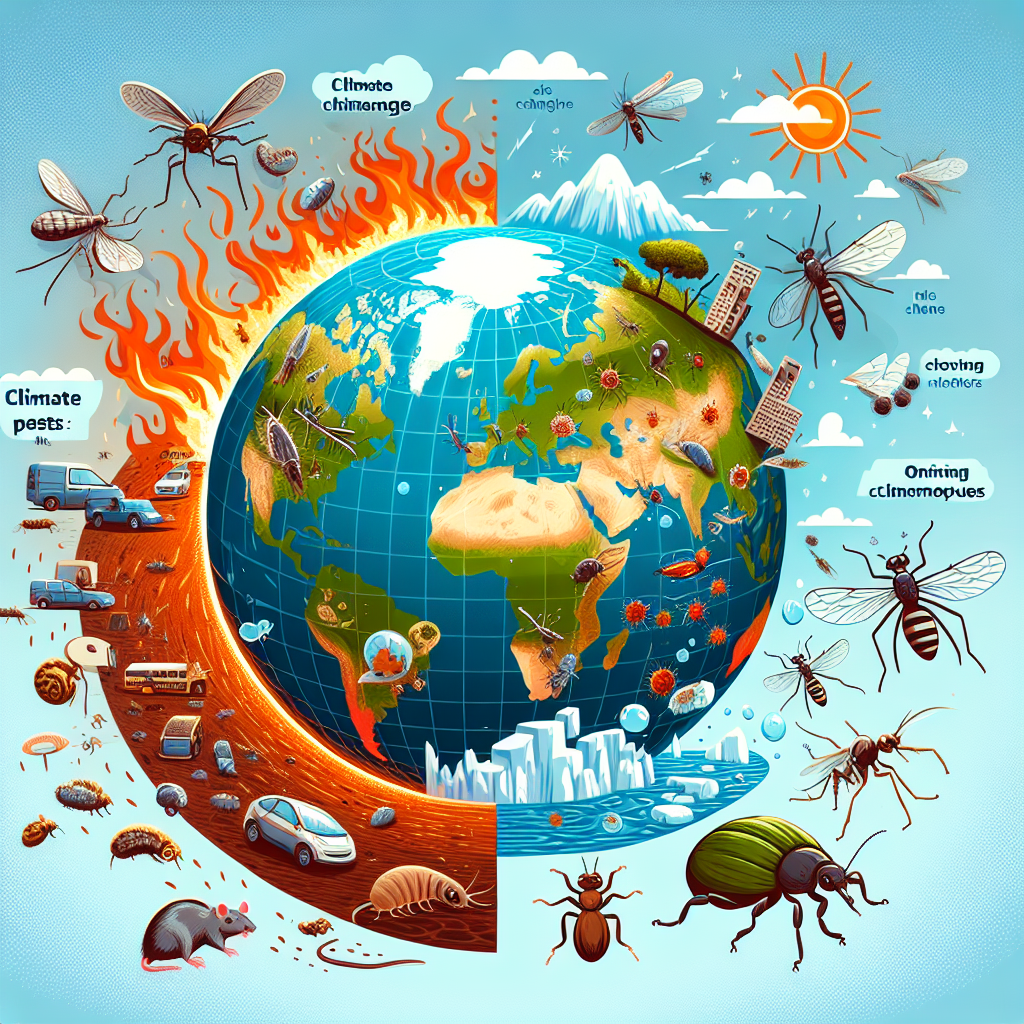Climate change has become one of the most pressing challenges of our time—one that affects not only our planet’s climate but also the ecosystems and species that inhabit it. Among these species, pests play a crucial role in our lives, often becoming a nuisance in gardens, homes, and farms. Understanding how climate change impacts pest behavior and control is vital for effective pest management strategies.
Understanding the Link Between Climate Change and Pests
Before diving into the specifics, it’s essential to recognize what is meant by "pests." Pests are organisms that negatively affect human activity, from agricultural crops to health and property. Climate change alters the conditions in which these organisms thrive. As temperatures rise and weather patterns shift, the distribution, lifecycle, and reproductive behavior of pests are affected, leading to increased challenges in pest control.
The Changing Climate: A New Playground for Pests
Rising Temperatures and Expanding Habitats
One of the most evident impacts of climate change is the increase in average global temperatures. This change enables pests to expand their geographic reach into areas that were previously inhospitable. For example, crop pests like the corn rootworm are infiltrating northern U.S. states where they were once kept at bay by colder temperatures.
Altered Life Cycles
Higher temperatures can also lead to accelerated lifecycle development. For many pest species, warmer conditions can shorten the time it takes for them to reach maturity, resulting in faster reproduction rates. This phenomenon is particularly concerning in the agricultural sector, as farmers may find themselves battling increased pest populations throughout the growing season.
Changes in Weather Patterns: More Than Just a Forecast
Increased Frequency of Extreme Weather Events
Extreme weather events such as heavy rainfall and drought can create conditions that either favor or hinder pest populations. For instance, wetter conditions might facilitate the breeding of mosquito populations, heightening the risk of transmitting diseases such as West Nile Virus or Zika. Conversely, drought conditions could lead to weakened crops, making them more susceptible to pest damage.
The Role of Seasonal Changes
As seasons shift due to climate change, the synchronization between pests and their natural predators or crops can become disrupted. This misalignment could reduce the effectiveness of natural pest control mechanisms, allowing pest populations to flourish unchecked.
Strategies for Pest Control in a Warming World
Integrated Pest Management (IPM)
Adapting to the changing climate requires innovative approaches in pest management. Integrated Pest Management (IPM), which combines biological, cultural, physical, and chemical methods, is becoming increasingly important. This approach can help minimize pest populations while reducing chemical dependence, making it more sustainable for the environment.
Monitoring and Forecasting
Investing in pest monitoring technologies, such as predictive analytics and climate modeling, allows farmers and pest control professionals to anticipate which pests are likely to emerge and when. By accurately forecasting pest behavior, timely intervention strategies can be developed to mitigate damage.
Promoting Biodiversity
Encouraging biodiversity in agricultural practices can help strengthen ecosystems against pest encroachment. By introducing beneficial insects and planting diverse crops, farmers can create a more resilient agricultural landscape, effectively managing pest populations while enriching soil health and productivity.
Humanizing the Issue
As we ponder the effects of climate change on pest behavior and management, it’s essential to remember that these changes do not occur in a vacuum. Farmers, gardeners, and households are directly impacted by shifting pest behaviors. The anxiety of increased crop losses or health risks can weigh heavily on communities. Acknowledging these emotional and social factors helps humanize the conversation around climate change and pest management.
Conclusion: A Call to Action
In conclusion, the impacts of climate change on pest behavior and control can no longer be ignored. The urgency of understanding these relationships becomes increasingly important as our world continues to change. We all play a role in the solution—whether through adopting sustainability practices in our gardens or supporting local farmers who prioritize environmentally friendly pest management techniques. By staying informed and proactive, we can help mitigate the impacts of climate change—not just on pests, but on our ecosystems and communities as a whole.
By focusing on both the biological aspects of pest behavior and the human emotions tied to agricultural success, this article aims to provide a comprehensive understanding of how climate change reshapes pest dynamics. Remember, your actions matter, and together, we can foster a more sustainable relationship with our environment.


